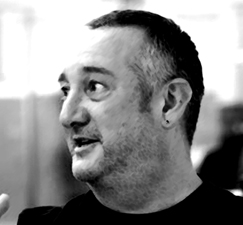In our current economic climate it’s not unusual to all of a sudden find yourself without employment. Many designers are faced with the choice of either finding a new job or starting up on their own. Phil Champ, an industrial designer with over 30 years experience, opted for the latter. ere he shares his experience of having to set up his own industrial design firm.
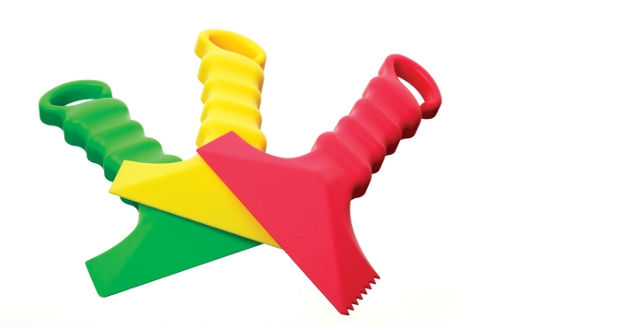
Ice scraper designed for Cannon Rubber in 1990
Tanya Weaver: Firstly, how long have you been a ‘one man band’ and how did you find yourself in this position?
Phil Champ: I started CID (Champ Industrial Design) in March 2011 following a ‘restructuring’ at my previous role who no longer required my particular skill set.
TW: Why did you opt to set up on your own instead of looking for a position within a consultancy or in-house design team?
PC: There was some interest in my services from previous clients who liked the design work that I had done for them in the past. They expressed an interest in using my services in some way but didn’t have the resources or inclination to take me on in a full time capacity. So I thought that rather than put my efforts into updating my CV, putting a suit on and looking for interviews, I would see how many ex-clients and other contacts would be interested in using me as a new consultancy. The response was very encouraging so I took a big, deep breath and decided to give it a go.
TW: What was the first thing you did?
PC: Panic! Actually, I was lucky in that a client that I’d worked with on and off for over ten years or so, Irisguard, had a rather big project that they wanted me to be more involved in. They offered me a retainer to guarantee some of my time. This was what made me decide that starting out on my own could be the right thing to do.
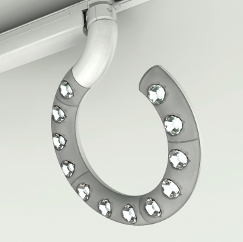
‘G’ is a track mounted spotlight intended to celebrate the use of LEDs rather than hide them away.Designed for ACDC Lighting in 2010. acdclighting.co.uk
TW: Where did you initially go for advice in your first steps to becoming self-employed?
PC: To my mind, a good accountant that understands the design industry is a must and I was very lucky in finding such a company. Their first advice was to join the FSB (Federation of Small Businesses), which I did. To be honest, the annual fee was worth it for the helpful advice I received in the first month of trading.
TW: How about registering your company?
PC: So far I have registered as self employed and as a sole trader as this was the simplest way to get started. If things progress well, I will consider whether to become a limited company.
TW: How did you go about setting up your business? Is it a straightforward process?
PC: Getting all the paperwork sorted out is a pain and quite time consuming but necessary to be professional and organised. You need to prepare Terms and Conditions, Non Disclosure agreements, business cards and other stationery. Visually these things are important as they are often the first contact that a potential new client will have with you.
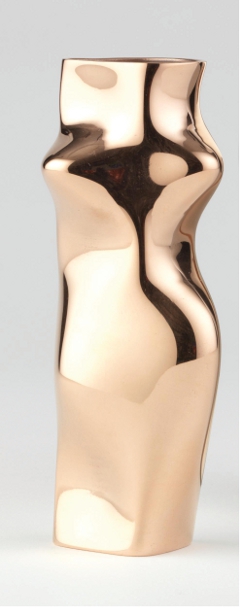
Nigella was created in 2003 using SolidWorks then SLA’d in Bluestone. Plating courtesy of 3DDC. www.3ddc.eu
Setting up a separate business bank account is vital so that you keep your personal finances and the business finances independent from each other. I was also advised to become VAT registered as soon as possible as it’s during this setting up process that you are likely to spend the most on equipment and other tools, which will enable you to operate in a professional manner.
It felt like a lot of hassle at the time but now it is all in place it feels good although it did distract me from establishing a client base and actually getting on with the business of designing.
TW: In terms of funding, have you been able to finance it yourself or have you had to look for investment?
PC: Fortunately, I have been mostly able to fund the startup myself but I have had some investment from outside for which I will always be grateful. I have also had some amazing help from various suppliers over credit terms and discounts, which has helped restore my faith in human nature. Not everyone out there is a shark.
It is worthwhile sitting down and doing your sums as to what equipment you MUST have as well as the equipment that it would be nice to have. The retainer that Irisguard put me on, as well as a couple of other clients, has also been a huge help as it does mean that there is some regular income. This helps you to plan ahead.
TW: Have you done a business plan and would you say that it’s important to do one?
PC: When what you are selling is basically your intellectual property, it is difficult to put a traditional business plan together. To be a little cynical, “there are lies, damned lies, and statistics.” Beyond that you have marketing forecasts and then business plans!
To be serious, it is very important to keep an eye on the future as well as the present. You need to strike a balance between working on current projects and trying to plan for future projects. But generally if you have managed to get in front of a potential new client, you will very quickly lose their interest if you say that you cannot look at their project for three months. Even when it is what you ought to say as you are already overloaded. You somehow find the time in the evenings and weekends as you are, after all, there as a service to their business. It is about trying to get the balance right.
What I have done in order to assess how much work I can physically manage is a quick sum. Divide the year into days, take off the weekends and then take off whatever you feel is appropriate for annual holidays. Then divide what is left into months. This gives you a reality check as to how many working days are in a month. This has helped me to organise and plan my time a little better.
Also remember to set aside some time for attending trade shows and chasing new opportunities.
TW: Has it been challenging working from home as opposed to in an office full of people?
PC: The main issue is the working on your own and the lack of interaction with other people. In my previous role there was always a pretty good atmosphere in the office but the up side of working at home is that you do get more done in a day without the interference of ‘office life.’ I am lucky in that I used to work from home two to three days a week anyway. My garage was already converted into an office and I had the self-discipline that it took to know that when I was there, I was at work.
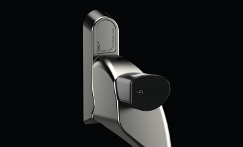
Work done in 2002 in conjunction with SAC Systems using neodymium magnet technology as part of the locking mechanism. www.sac.co
TW: Have you successfully been able to separate home from work life?
PC: I realise that this will sound really sad but I have never been good at separating work and home life. I think that it is pretty true to say that most designers suffer from this. Design is not really a job but a passion and the problem solving required is never just a 9am to 5pm affair. I have lost count of the number of 2am cold sweats that lead to scribbled notes when an idea has just forced its way to the front of your head, dragging you out of the arms of Morpheus! I guess I am also very lucky to have a supportive partner who understands the obsession of working in the design industry.
TW: What has been the best thing about setting up on your own?
PC: The fantastic response and support from people from the industries that I have worked in over the years and their apparent conviction that I will succeed despite my own nervous doubts. I have a small group of like minded associates who I call on when I need to bounce ideas around and they do the same to me from time to time. It is essential not to become isolated. I have joined the local business breakfast club, which meets for breakfast and holds presentations from local businesses once a month. It is also a good place to network. Additionally, the local branch of the FSB holds regular social and business events.
TW: And what has been the worst thing about setting up on your own?
PC: My cat is useless at brainstorming concepts! The panic of whether you have enough work, too much work and the amount of time spent doing paperwork and chasing payments. As well as the usual self doubts over whether a client will like the actual design work that you have done for them.
TW: Although you did have some work from previous clients, how have you gone about winning new business and getting your name out there?
PC: I guess I’ve been very lucky in as much as the timing seemed to be right. I have been approached by a medical company and a high tech electronics company to get involved in projects which I would not have been able to do while in my previous employment. I also tend to go to as many trade and manufacturing shows as work allows as I think that these are important.
The iris recognition camera was designed for Irisguard. It is currently going into production. www.irisguard.com
I recently went to the MEDTEC show at the NEC in Birmingham and found out about metal and ceramic injection moulding that a French company specialises in. It was really fascinating. I could easily get quite geeky at this point as new manufacturing processes intrigue me. It is part of what I love about the design industry; you can never know it all as it is constantly changing. I firmly believe that you have to network and actually stop and engage with people. ‘Linked in’ is also a useful place to let your network know that you have changed position and to advertise your services.
TW: What are the key things that CID will be offering clients?
PC: The key thing about what CID can offer clients is over 30 years experience of the design industry working in many different industries and therefore understanding the wide range of clients’ needs. I have never had the luxury of just sketching concepts and walking away and don’t think I would enjoy that anyway. I enjoy the whole process of design, including being on the factory floor the first time a mould tool opens and can you see something that started out as an idea in your head become a real thing.
I am lucky that after all the years of working, I am still passionate about what I do. I love it and that makes me very lucky I think.
TW: I know that you didn’t choose to be in this position of either looking for a new job or starting up on your own but do you feel confident about the future?
PC: Confident about my design and problem solving abilities, yes. Confident of being able to run a business and make sure that all the clients are happy, I hope so; but only the future will tell. Confident about managing the paperwork, hmmm, we’ll see.
I am sure that it will be a challenging journey; it has been so far. I’d like to get involved in many interesting new projects for a wide variety of industries.
TW: Would you recommend self-employment to other designers who may be drawn to going solo?
PC: I think that if you have a yearning to try and run your own business, at some point in your life you have to give it a go. I think that the most important thing that you have to remember is that you are a service industry and it is vital that you deliver what the client wants.
www.champ-id.co.uk
Phil Champ’s top tips for designers who are thinking of setting up their own business
1 Find a good accountant and bookkeeper. Let’s face it, designers are not usually the best organised when it comes to paperwork and filing.
2 Try and be organised. This includes making time to get out to exhibitions and trade fairs.
3 Listen to people who have tried and succeeded as well as tried and failed. We all learn from our own mistakes but if you can learn from other peoples it doesn’t hurt as much!
4 Good luck! Remember that you chose to do this and only you can make it succeed.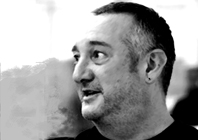
Phil Champ explains the fears and rewards of setting up his own company


